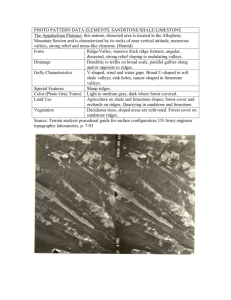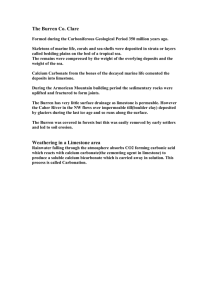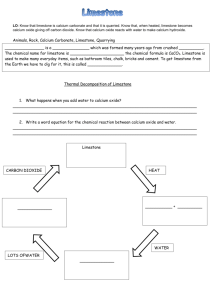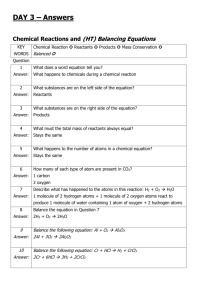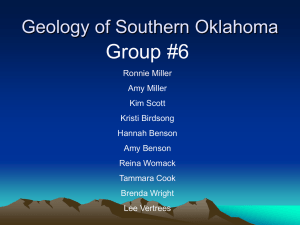to this page in word format
advertisement
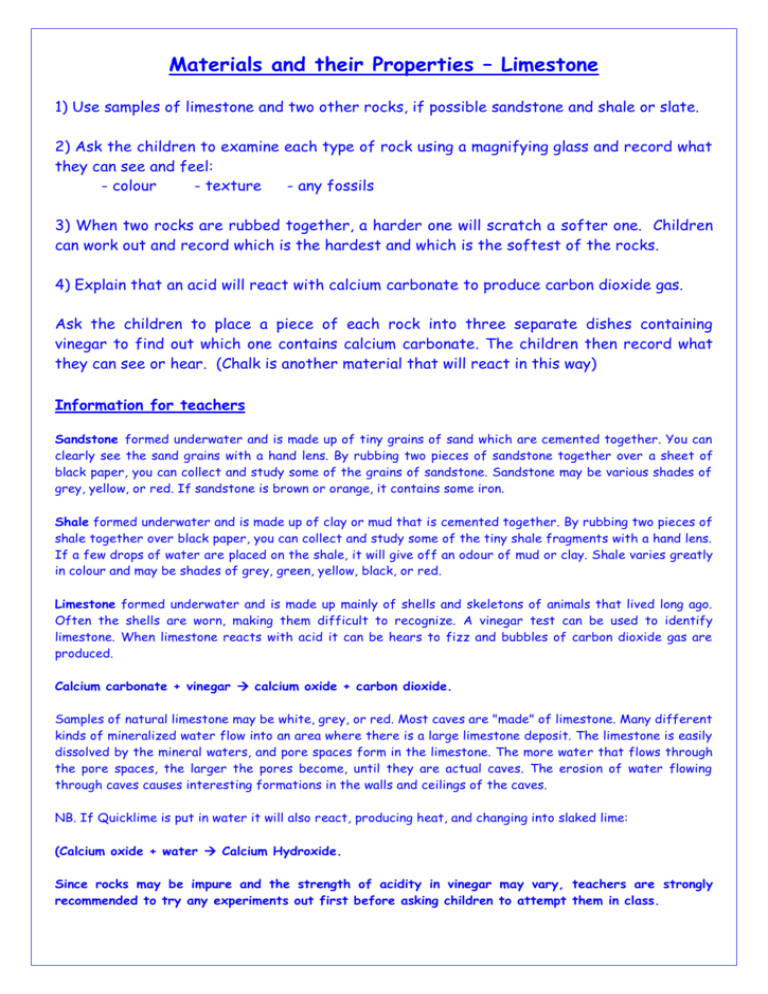
Materials and their Properties – Limestone 1) Use samples of limestone and two other rocks, if possible sandstone and shale or slate. 2) Ask the children to examine each type of rock using a magnifying glass and record what they can see and feel: - colour - texture - any fossils 3) When two rocks are rubbed together, a harder one will scratch a softer one. Children can work out and record which is the hardest and which is the softest of the rocks. 4) Explain that an acid will react with calcium carbonate to produce carbon dioxide gas. Ask the children to place a piece of each rock into three separate dishes containing vinegar to find out which one contains calcium carbonate. The children then record what they can see or hear. (Chalk is another material that will react in this way) Information for teachers Sandstone formed underwater and is made up of tiny grains of sand which are cemented together. You can clearly see the sand grains with a hand lens. By rubbing two pieces of sandstone together over a sheet of black paper, you can collect and study some of the grains of sandstone. Sandstone may be various shades of grey, yellow, or red. If sandstone is brown or orange, it contains some iron. Shale formed underwater and is made up of clay or mud that is cemented together. By rubbing two pieces of shale together over black paper, you can collect and study some of the tiny shale fragments with a hand lens. If a few drops of water are placed on the shale, it will give off an odour of mud or clay. Shale varies greatly in colour and may be shades of grey, green, yellow, black, or red. Limestone formed underwater and is made up mainly of shells and skeletons of animals that lived long ago. Often the shells are worn, making them difficult to recognize. A vinegar test can be used to identify limestone. When limestone reacts with acid it can be hears to fizz and bubbles of carbon dioxide gas are produced. Calcium carbonate + vinegar calcium oxide + carbon dioxide. Samples of natural limestone may be white, grey, or red. Most caves are "made" of limestone. Many different kinds of mineralized water flow into an area where there is a large limestone deposit. The limestone is easily dissolved by the mineral waters, and pore spaces form in the limestone. The more water that flows through the pore spaces, the larger the pores become, until they are actual caves. The erosion of water flowing through caves causes interesting formations in the walls and ceilings of the caves. NB. If Quicklime is put in water it will also react, producing heat, and changing into slaked lime: (Calcium oxide + water Calcium Hydroxide. Since rocks may be impure and the strength of acidity in vinegar may vary, teachers are strongly recommended to try any experiments out first before asking children to attempt them in class.

